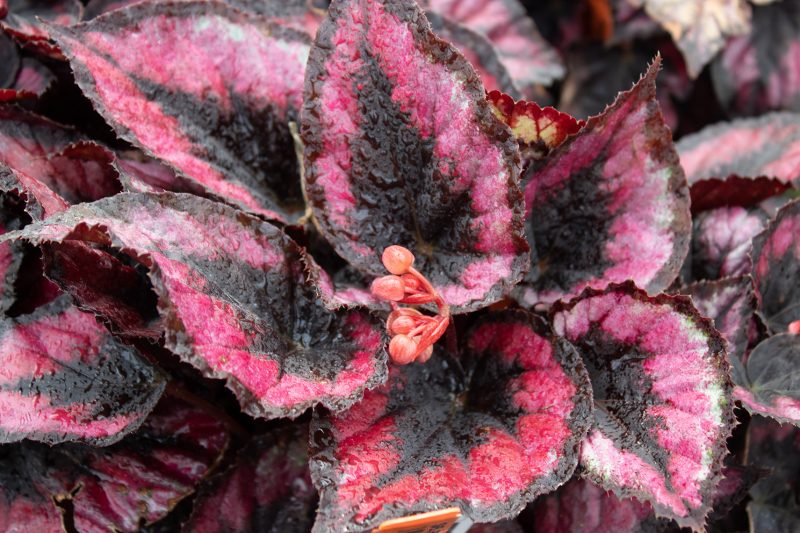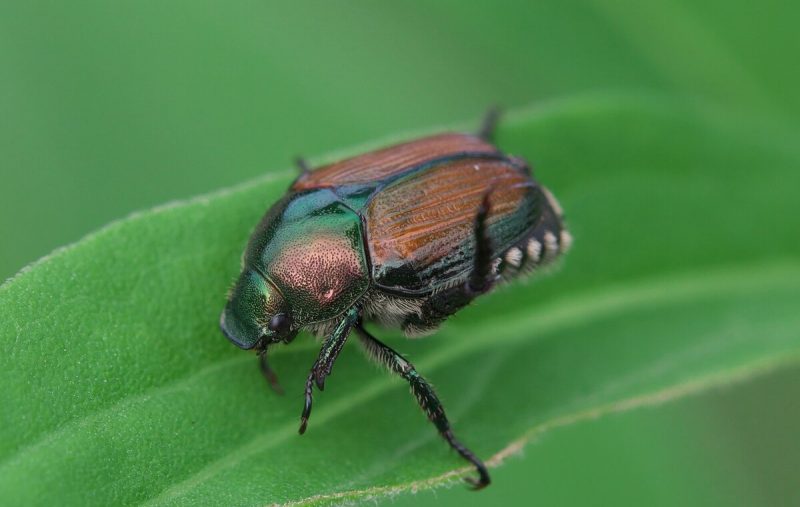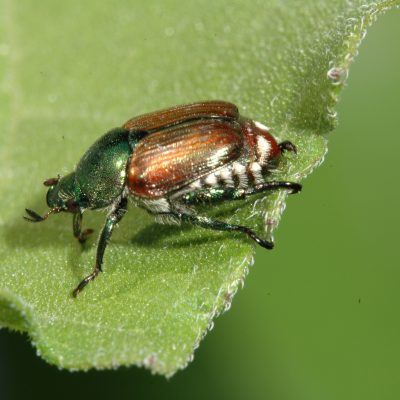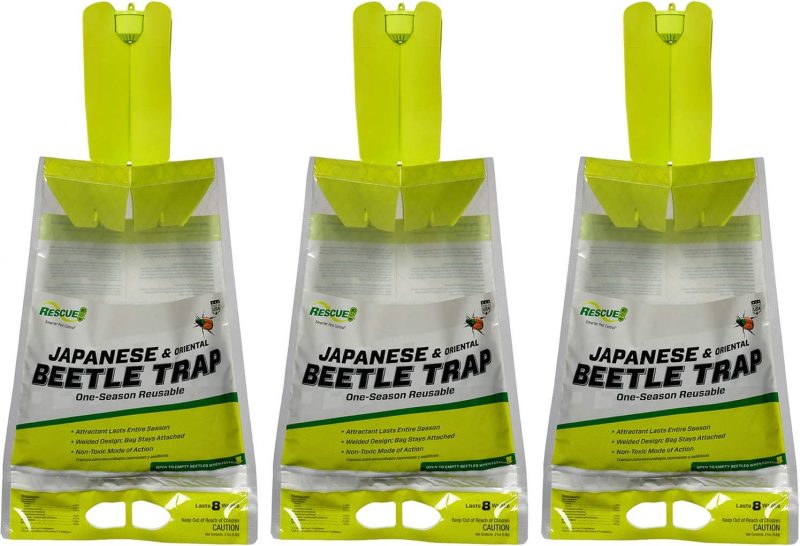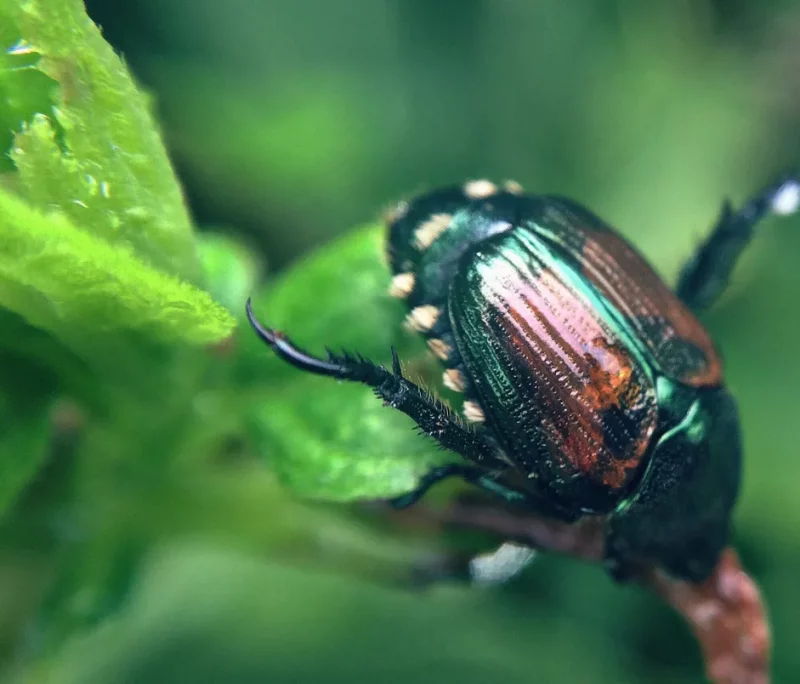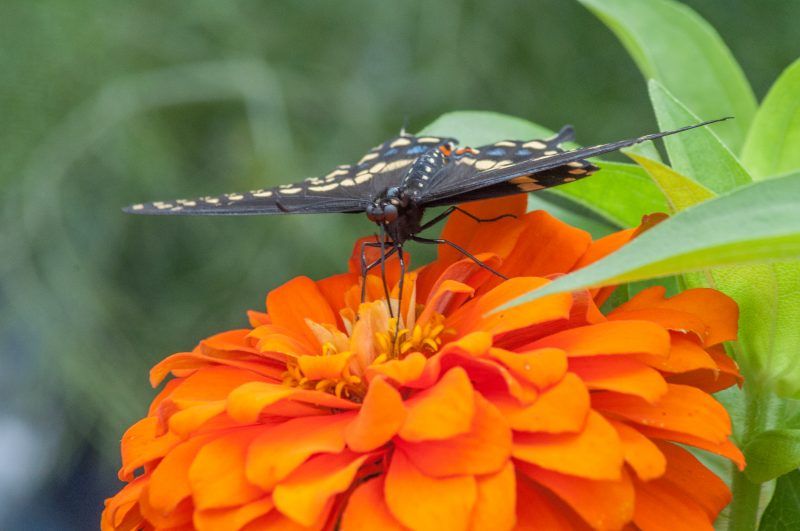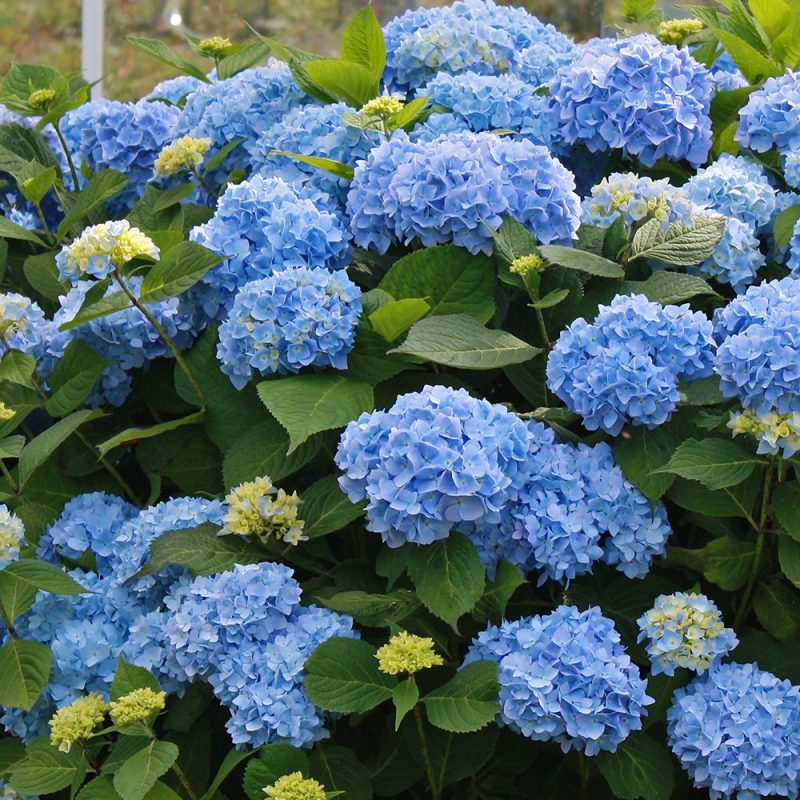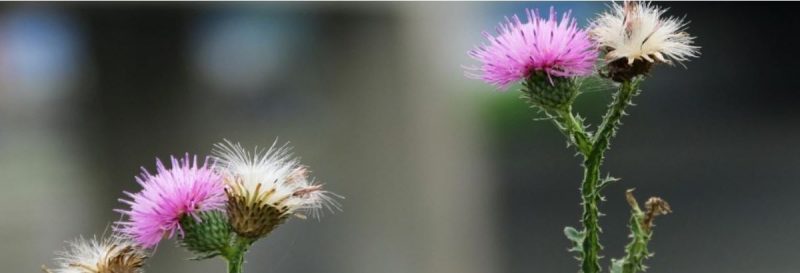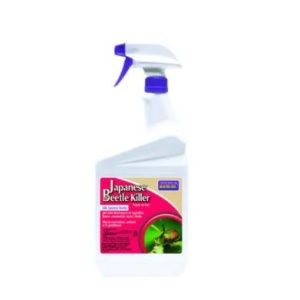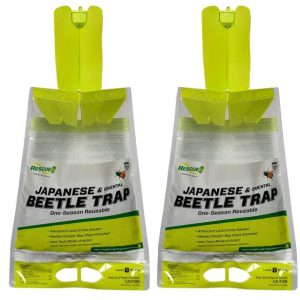If you want to avoid chemical insecticides (which we highly recommend), here are some organic methods you can try first.
The best time to try these methods is August through September, when newly hatched grubs are actively feeding on grass roots.
Beneficial nematodes are microscopic, living creatures that feed on grubs. Nematodes are a long-term solution because they reproduce on their own and continue feeding on grubs (and other pests) for years.
Because nematodes are alive, you have to introduce them to the lawn soon after you purchase them. They love moisture, so water the lawn before and after application, unless the ground is already wet from rain.
Milky spore is a bacterium that infects Japanese beetle grubs. It’s one of the oldest and most popular natural solutions to Japanese beetle grubs, but it requires patience. After you release the bacterium into your soil, it can take up to three years to work.
When you purchase milky spore, it comes as a powder. To apply, add a teaspoon of the powder to every 4 feet of your lawn. Water the lawn after applying. For best results, add milky spore to the lawn when the soil is between 60 and 70 degrees Fahrenheit.
Note: Milky spore doesn’t work on all grubs, only Japanese beetles. Distinguishing between different species of grubs is extremely difficult. Only use milky spore if you’ve had Japanese beetles before and you’re certain that’s the kind in your lawn now.
Neem Oil:
There are two types of neem oil: raw neem oil that contains the insecticide azadirachtin and clarified hydrophobic neem oil, which has most of the azadirachtin removed.
Clarified hydrophobic neem oil is usually the kind you’ll find in stores. You can use clarified hydrophobic neem oil to suffocate grubs in your soil.
Purchase a neem oil spray or mix one yourself with this recipe:
Step 1: Mix ⅓ teaspoon of mild or natural soap (like Castile soap) into 1 quart of warm water.
Step 2: Shake well.
Step 3: Add 1 teaspoon neem oil to the mixture and shake well again.
Spray it on and around the brown patches in your lawn to suffocate grubs.
Warning: Neem oil can damage plants, so be careful not to get any on your garden plants. Grass is hardier and usually won’t suffer damage. Neem oil can harm beneficial insects, as well.
Lawn-aerating sandals
Yes, believe it or not, we mean the sandals that go on your feet. Lawn-aerating sandals are sandals with spikes on the bottom. They’re meant to poke holes in the soil for lawn aeration, but you can use them for grub control.
This method is quite simple. Wear the sandals and walk across your lawn a few times, concentrating on areas with brown patches. When the spikes poke into the soil, they should stab through at least some of the grubs in your lawn.
The sandal method may not solve large infestations. But if you have a small number of grubs in your lawn, aerating sandals could be worth a try.
Attract Birds:
Many birds feed on grubs (and adult beetles, too). A grub infestation alone is often enough to attract birds, but you can attract even more if you set up birdhouses, feeders, and baths around your yard.
The more birds you have hanging around, the more they’ll decimate your lawn’s grub population. Plus, a large number of predators can deter more adult beetles from moving into your lawn and laying eggs in the future.
Hand-picking and drowning the beetles in soapy water is an option if their population is low.
As a last resort, spot treat adults with botanical pesticides. Apply to all leaf surfaces and deep into the plant canopy where insects hide.
